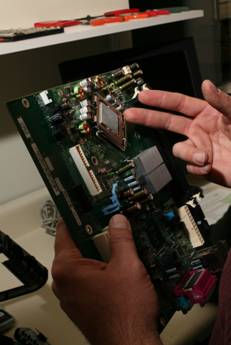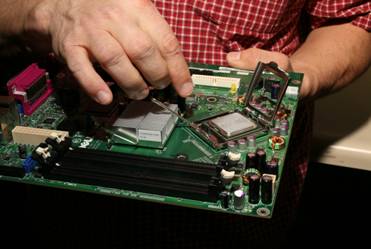Collaboration and Partnerships
Note: EPA no longer updates this information, but it may be useful as a reference or resource.
Electronic Product Environmental Assessment Tool (EPEAT)
OPPTS/OSW/Region 9/Region 10
Geographic location or area of activity: Nationwide
Description of activity: On July 21, 2006, the EPEAT system (Electronic Product Environmental Assessment Tool) was launched, and for the first time institutional purchasers could identify computer products that meet a strict comprehensive national standard for environmental performance. Through EPEAT, public and private sector purchasers now have access to information on the environmental attributes of more than 700 desktop and laptop computers and monitors, and are using the tool the “green” their procurement of these products, and manufacturers going the extra mile to green their products have gained a market advantage for doing so.
The EPEAT tool was developed out of a 3-year process funded and staffed by EPA, with the assistance of over 100 stakeholders. The result has been the development of the Institute of Electrical and Electronics Engineers (IEEE) 1680 American National Standard for the Environmental Assessment of Personal Computer Products, an ANSI accredited voluntary consensus based standard which defines environmental performance criteria for computer desktops, laptops, and monitors, and a list of products registered as meeting this criteria on the EPEAT website (www.epeat.net).
The EPEAT program has been a huge success. As of December 2nd, 2007, twenty-four manufacturers have registered over 700 products as meeting the EPEAT criteria as outlined in the IEEE 1680 Standard. To date, federal purchasers have integrated EPEAT into IT Request For Proposals (RFPs) or contracts totaling over $42 billion dollars.
In a report released by the Green Electronics Council, the environmental benefits of just the first six months of EPEAT registered computer sales when compared with traditional computers produces the following environmental benefits:
- Saves 13.7 billion kWh of electricity, enough to power 1.2 million U.S. homes for a year;
- Saves 24.4 million metric tons of materials, equivalent to the weight of 189 million refrigerators;
- Prevents 56.5 million metric tons of air pollution, including 1.07 million metric tons of global warming gases (the equivalent of removing 852,000 cars from the road for a year);
- Prevents 118,000 metric tons of water pollution;
- Reduces toxic material use by 1,070 metric tons, equivalent to the weight of 534,000 bricks, including enough mercury to fill 157,000 household fever thermometers; and
- Avoids the disposal of 41,100 metric tons of hazardous waste, equivalent to the weight of 20.5 million bricks.


Examining Equipment
Interagency partners: The Federal Electronics Stewardship Workgroup (which includes representatives from almost all federal agencies and departments), The Office of the Federal Environmental Executive, The State of Minnesota, The State of Massachusetts
Local partners: The City of Seattle, The Center for Environmental Health, Hospitals for a Healthy Environment, Cleaner Production Action, Silicon Valley Toxics Coalition,
Northeast Recycling Coalition and 23 manufacturers
Activity URL: https://www.epa.gov/epp/pubs/products/epeat.htm
![[logo] US EPA](../gif/logo_epaseal.gif)